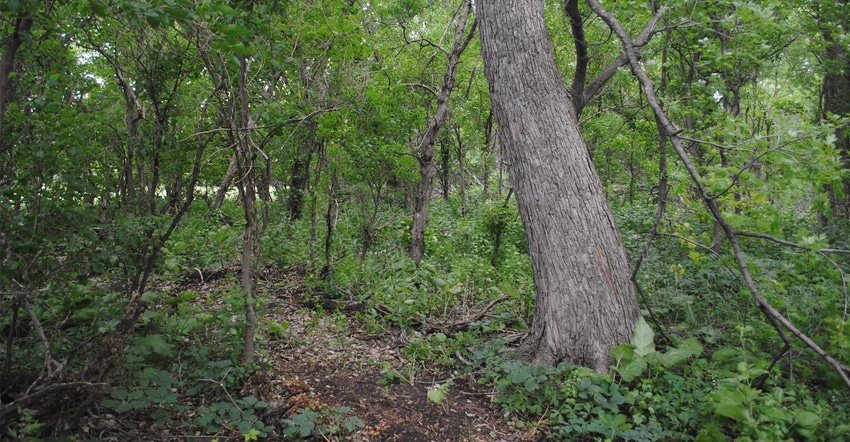
If you are one of the fortunate landowners to have woodlands on your farm or ranch, you know that to fully realize the benefits of those woodlands, it takes management.
The woodlands are just like any other crop. How you manage woodlands depends on your goals. You may manage strictly for wildlife or hunting opportunities. Perhaps you are managing for lumber, veneer or firewood markets, or personal use.
Either way, crop tree thinning is one method of management that allows landowners to harvest specific trees for different purposes and improve the woodlands at the same time.
University of Minnesota Extension has a great website that covers several woodland management and thinning methodologies. According to a bulletin written by Eli Sagor, UM Extension forester, crop tree thinning “involves carefully maximizing the growing space available to the stand’s best trees.”
It is a great method to use when you are cutting firewood from your woodlands, but it has benefits for a diversity of goals for woodland management.
The UM information calls for landowners to first walk through the woodland stand to identify trees with the greatest potential future value. In this case, value doesn’t necessarily mean timber. It could mean den trees for wildlife, a rare tree species that grows in your woods, or a tree that offers particularly vivid fall color, as well as trees you want to harvest in the future.
You decide which trees have value for your own purposes. These trees of value, whether they are marketable timber trees or of other value, should be flagged with flag tape, spray paint or some other way of identifying them.
Competition
The next step is to identify the competing trees around these trees that you have deemed valuable. “To identify competing trees, don’t look down,” the UM bulletin states. “Look up at the crowns.” Any tree with a crown that is touching the crown of your valuable trees is the competition. These competing trees can be considered for removal. Be careful not to overdo it.
If all trees around your value trees have been growing together for many years, taking those trees away all at once may cause shock to the value trees. Sagor asks landowners to consider a multistage approach that removes competing trees over a period of several years. Then, you will need to monitor the woodland for crown closure after thinning, and for the health of your value trees over time.
In my own small woodland, we have invasive trees such as mulberry that threaten to take over old stands of silver maple, cottonwood, hackberry, wild plum, and a few ash and elm. While the mulberry trees are understory for the most part, they compete for sunlight and moisture for any new growth of the more desirable trees in my grove. I have been thinning the mulberry trees heavily, and still leaving just a few for fruit and wildlife, over the past several years.
While my woodland is not large, and it is not a great producer of firewood, it has value to me for a little firewood, wildlife and aesthetics on the farm, so the trees I consider valuable may be different than those you consider valuable. Ultimately, it is up to the landowner to decide.
However, the idea of crop tree selection and thinning less-desirable trees to improve your woodland, however large or small, can offer one method to reaching your goals for the woodland over time and encourage growth of those trees that you see as valuable.
Learn more online at extension.umn.edu.
About the Author(s)
You May Also Like






